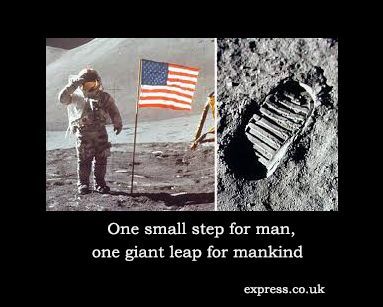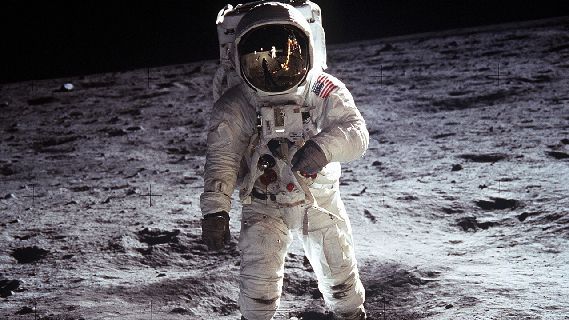One small step for man, one giant leap for mankind

We all remember where we were on this memorable day when Our Earth changed forever. That is, of course, if you were born before this memorable date in the history of the world.
I was teaching in a small country school in Central Victoria. Television had only been possible in Australia for 13 years and there was no TV in the school. However the Principal had hired a portable set and the teachers crowded into his office to watch this historical event.
The children had been let loose in the playground while we watched the event that was to change the way we viewed the world and to make our universe so much smaller.
There is no better way to remember this day than by Reliving Man Landing on the Moon through the wonders of technology.
Apollo 11 was the spaceflight that first landed humans on the Moon. Commander Neil Armstrong and lunar module pilot Buzz Aldrin, both American, landed the Apollo Lunar Module Eagle on July 20, 1969, at 20:17 UTC. Armstrong became the first person to step onto the lunar surface six hours later on July 21 at 02:56:15 UTC; Aldrin joined him 19 minutes later. They spent about two and a quarter hours together outside the spacecraft, and collected 47.5 pounds (21.5 kg) of lunar material to bring back to Earth. Command module pilot Michael Collins flew the command module Columbia alone in lunar orbit while they were on the Moon's surface. Armstrong and Aldrin spent 21.5 hours on the lunar surface at a site they named Tranquility Base before rejoining Columbia in lunar orbit. (Wikipedia)
Armstrong's first step onto the lunar surface was broadcast on live TV to a worldwide audience. He described the event as one small step for (a) man, one giant leap for mankind. Apollo 11 effectively ended the Space Race and fulfilled a national goal proposed in 1961 by President John F. Kennedy: "before this decade is out, of landing a man on the Moon and returning him safely to the Earth." (Wikipedia)

